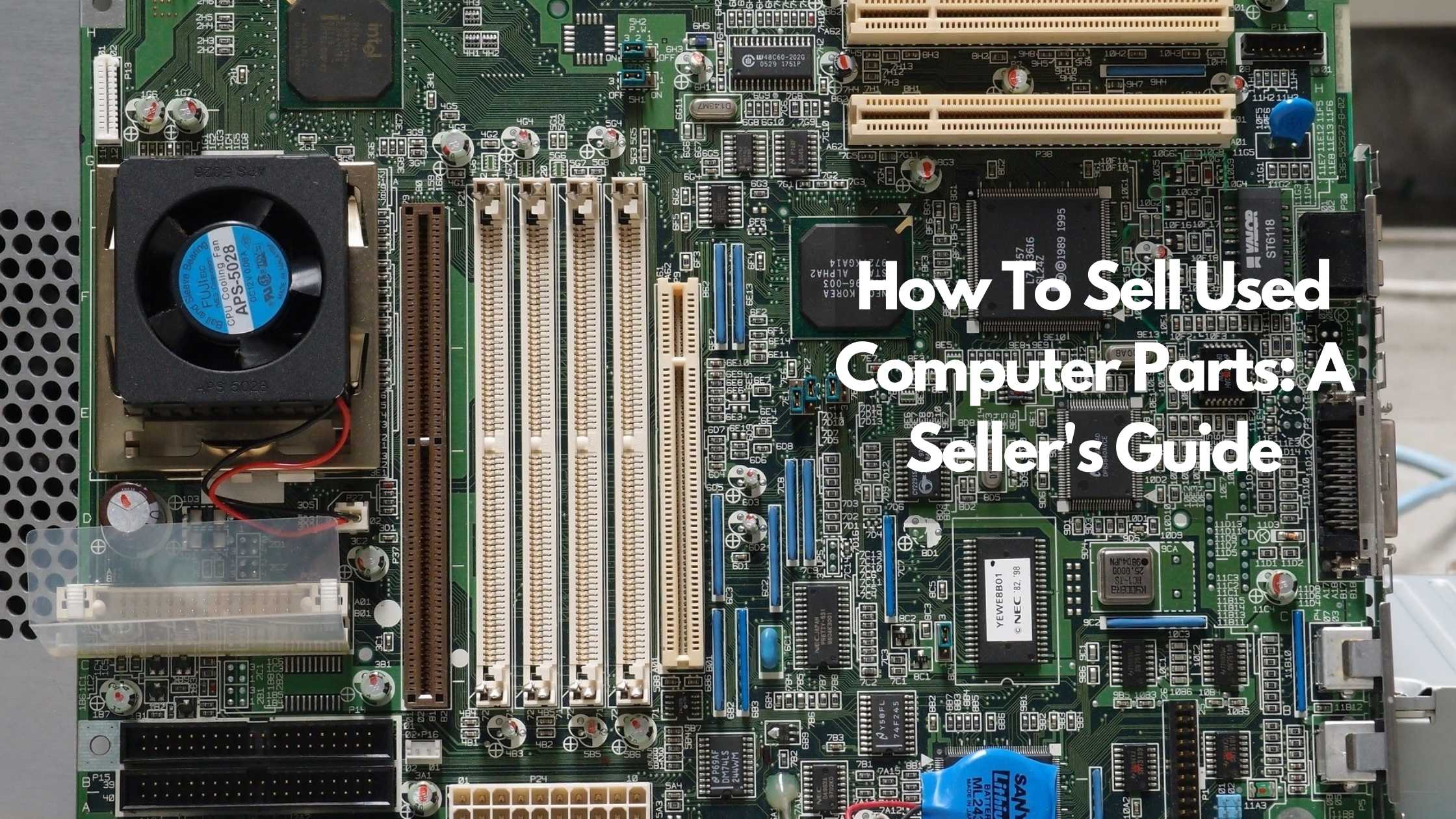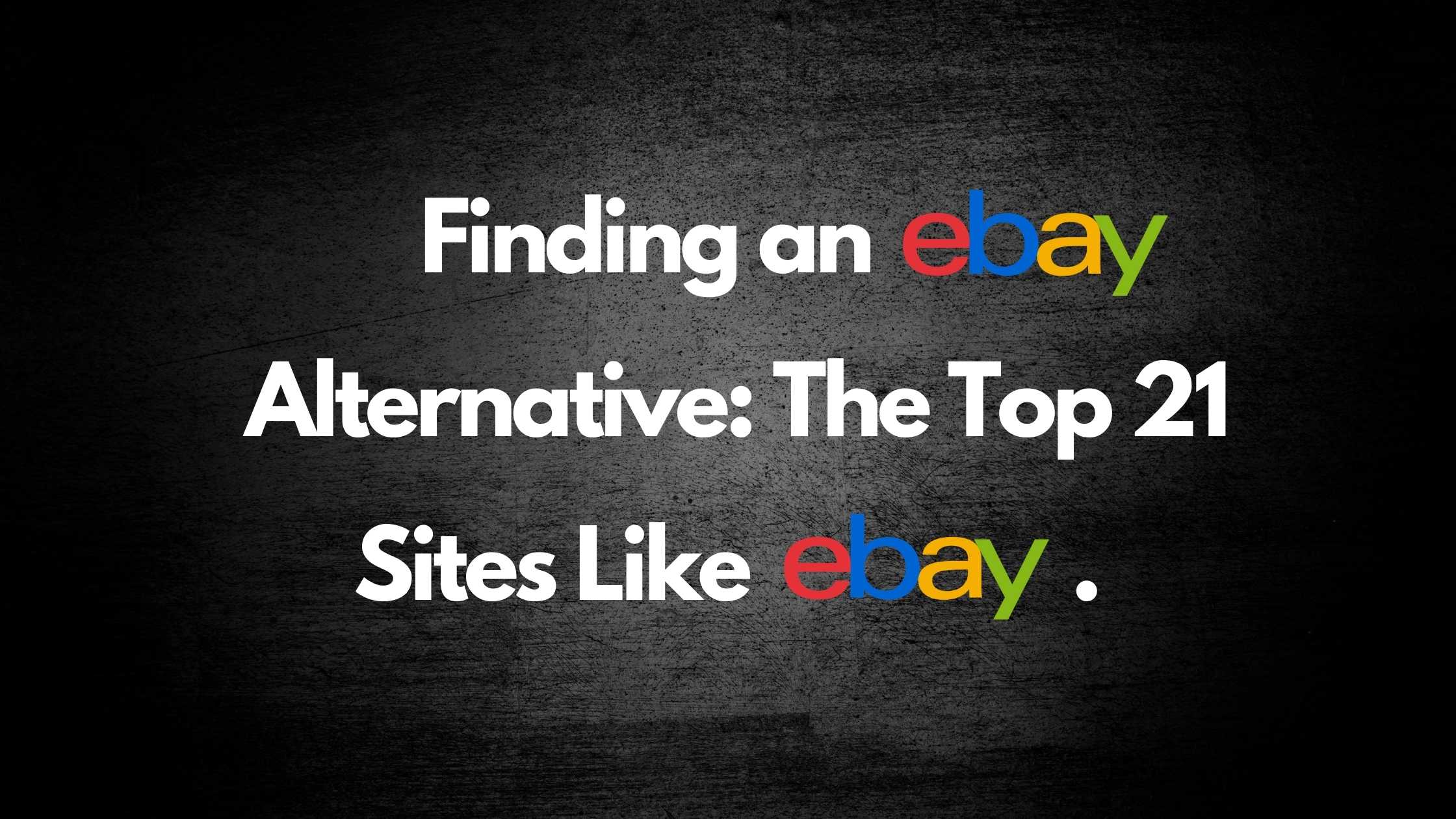
Selling Baby Clothes: A Complete Guide
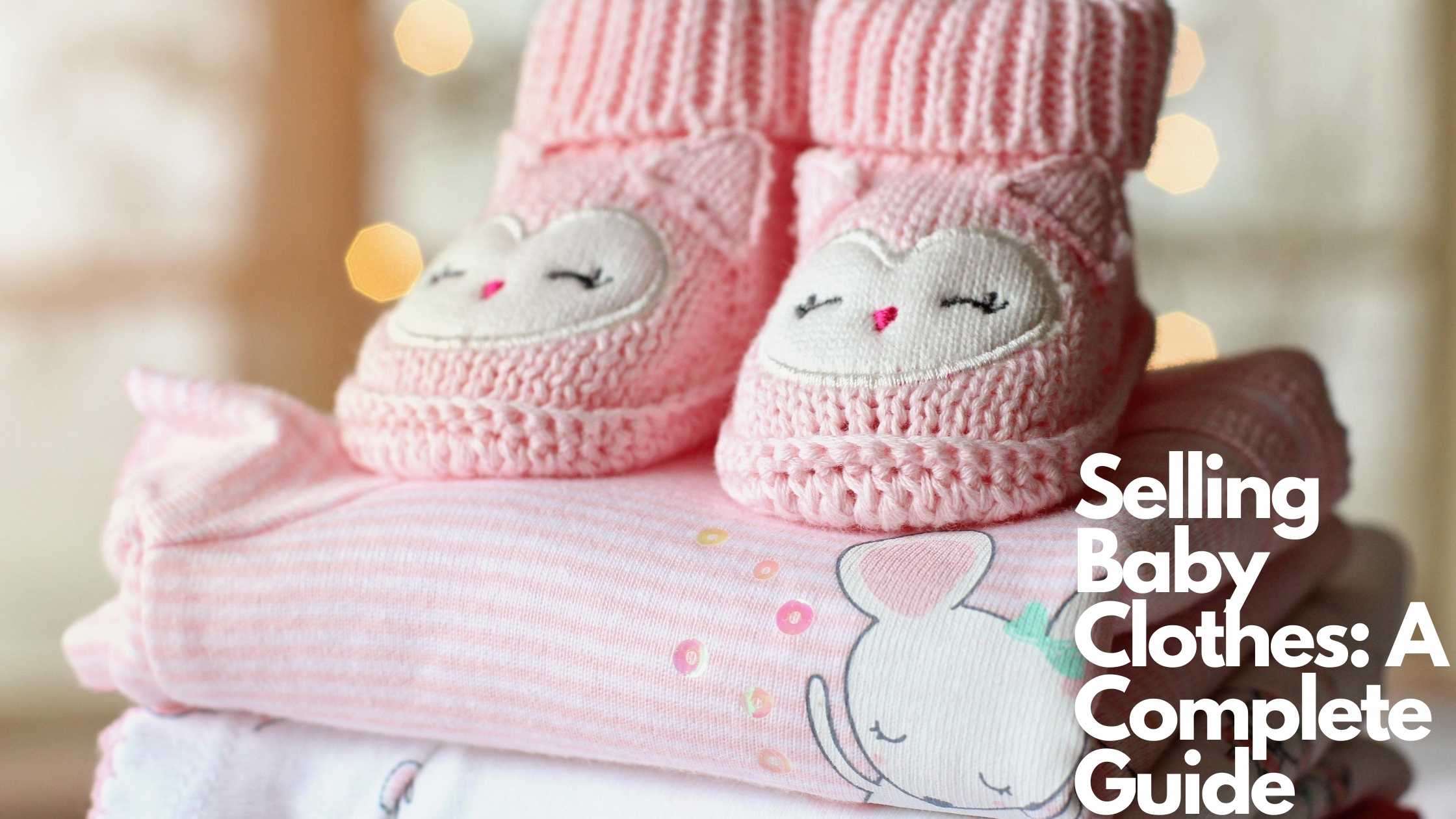
Children grow so fast that their clothes stop fitting shortly after you buy them. Infants may outgrow their garments within six months and need to get others.
So, what happens to all these clothes?
The baby clothes industry is a lucrative one, if you know which garments to sell. In this article, we’ll share all you need to know to get started with this business so keep reading.
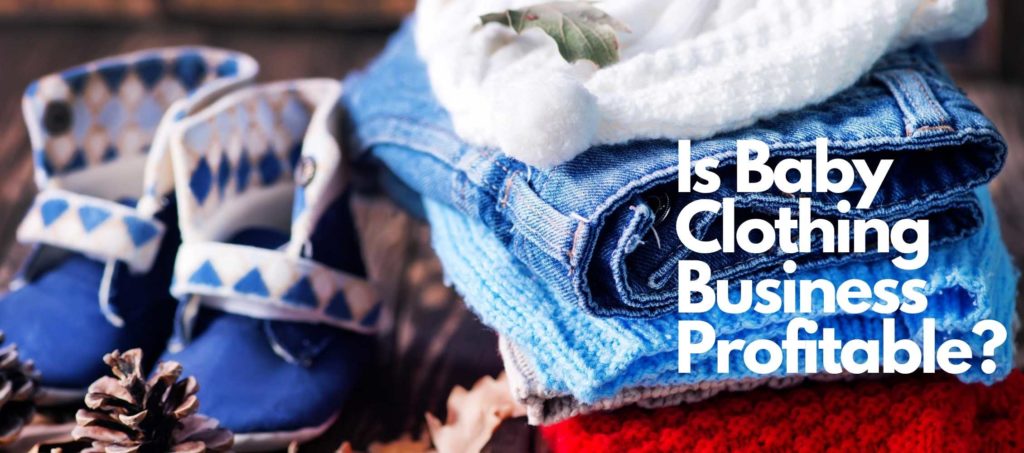
Is the baby clothing business profitable?
The baby clothing business can be very profitable because the industry has a constant ready market – babies. To increase your chances of success, you need to figure out where to buy good clothes at a low price and where to resell these; whether it’s online or in a physical store.
Below, we’ll share information on how to research the ideal resale price, and you’ll also get an idea of where to buy your stock cheaply.
And for more information on how to make money selling online, you can check out this article.
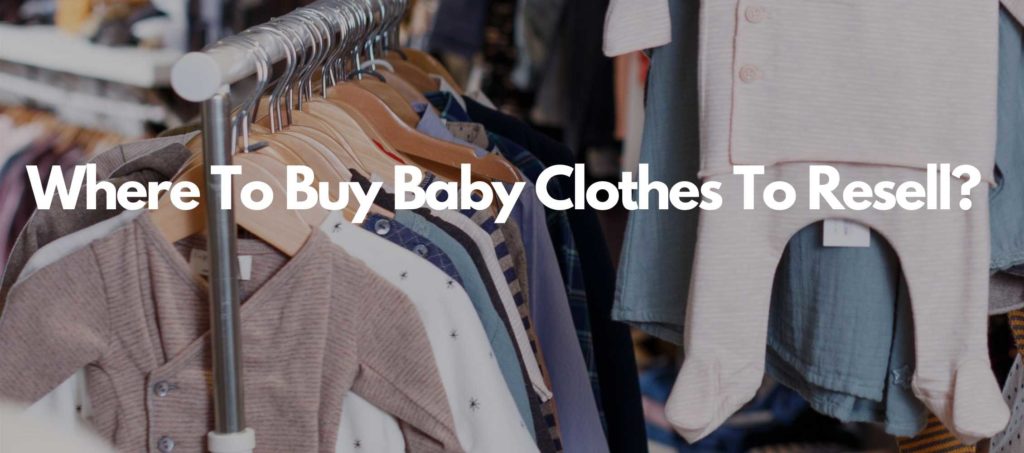
Where to buy baby clothes to resell
Since babies outgrow their gear fast, those items are normally as good as new. Owing to that, it is easy to find second-hand outfits that are almost new. Cheap places to buy babies’ clothes are as mentioned below.
- Family and Friends
Do you know what is cheaper than cheap? Most definitely, that would be free. Close family members and friends whose children are all grown can surrender their baby outfits to you for free or at a small cost.
If you have no capital to launch your baby wear venture, this is a good way to start the business. Utilize the proceeds of this initial sale to buy more clothes for resale.
- Consignment shops
These stores often have lovely baby garments at a low cost. Often, they offer discounts.
Sometimes, with $10, you can walk away with clothes in bulk. The good thing is that once you strike a rapport with the seller, they might reserve nice baby clothes for you. They would also let you know whenever good clothes are in stock.
- Facebook Marketplace
Are you wondering how to buy things on the Facebook marketplace? Look for the Marketplace icon in the Facebook app. From there, browse the items for sale until you find nice baby clothes for cheap.
Save your choice of collection for later or directly message the seller through messenger.
Facebook marketplace is an online version of garage sales except it is open throughout.
Parents sell pre-owned baby clothing which are often in good condition at cheap rates. If you are lucky, you may meet people from your local community. On occasion, some people do give away baby outfits for free.
- Clearance sales
Be assured of cheap prices when you shop at clearance sales. The stores constantly upgrade to new baby merchandise hence the need to release the old stock at clearance rates to get rid of them fast. Track these sales of a store’s cycle to benefit from the best prices for the baby gear you require.
- Yard or garage sales
Those who sell in yard sales usually want to declutter. They are not interested in making a profit but reducing stuff in their homes. This is what makes baby clothes inexpensive in such places.
Yard sales are most common in spring and summer. These are great places to buy many garments at discounted rates. You can easily make an offer and pick a whole batch of baby’s apparel.
For instance, instead of spending $1 per baby garment, purchase all of them at $0.40 per item. These sell for $1 or $2 and you may resell for $5 or more each.
It is also not surprising to find the clothing with their tags still attached to them.
- Online flash sale sites
If you reside away from big cities, you may not experience shopping in a warehouse during a sample sale. Nevertheless, you can save big in online flash sales.
The inexpensive sites to be on the lookout for include Crazy 8, SheepBuy, and Gymboree.
Another one is Swap, which is touted as one of the largest online consignment shops for both new and second-hand clothes.
With this information, you are sure to find baby apparel at cheap prices so you can resell them.
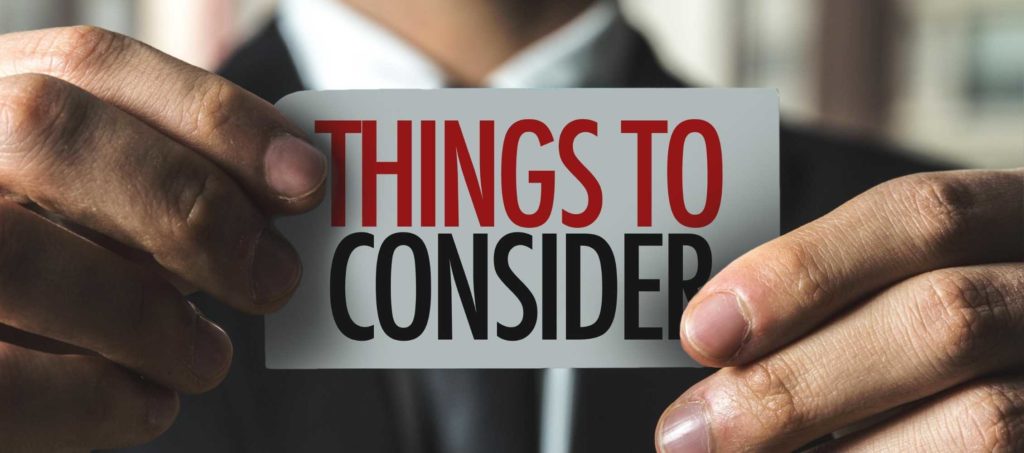
What to consider when buying baby clothes for resale
You can buy new baby outfits from wholesale shops so that you resell them. You may also buy from any of the places mentioned above. It is important to purchase clothing that interests most parents and is safe and comfortable for kids.
The pointers below will help you to choose what is best for reselling.
1. Buy clothes whose fabrics are environmentally safe and don’t affect babies’ skin. Examples of these materials are organic cotton, rayon, and soy-based. They are made from raw materials and are a natural preference for baby wear.
Purchasing baby garments manufactured from nylon and polyester may cause itchiness. They do not absorb water, which controls body temperatures. Avoid these as they cause great discomfort.
2. Buy clothing with definite dimensions. The size helps mothers decide what to purchase for their babies. An appropriate size will allow the baby ease of movement.
3. Think about the safety of the child when purchasing baby articles. Keep off clothing with tiny additions like buttons and other decorations. They may pose a choking risk.
Also, do not purchase apparels with long waist strings or ties as they may accidentally lead to strangulation.
4. Before purchasing kids’ outfits, think of the ease with which a child can wear and remove the clothing. Some of the features to note are snap fasteners and other crotch openings. They ease the changing of diapers, without having to remove the entire child’s clothing.
Pick clothing with zip fasteners in the front as they allow flexibility.
5. Transparent baby gear could be a sign of cheap material. Such clothes are not long lasting and may not get you to the next season.
If the cotton sweaters are peeling off, know that the fabric condition is low. That is because cotton is a natural thread that withstands peeling. It may imply that the cotton quality was poor.
Find out more about how to buy used stuff online in this blog post.
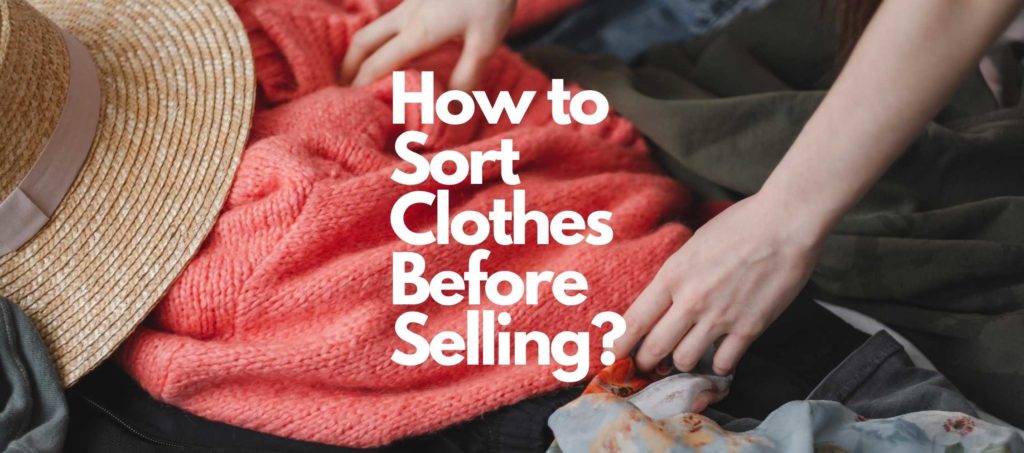
How to sort clothes before selling
Sort the baby clothes according to their condition, label, size, and type. This eases your work when pricing them. After sorting, decide which ones to sell in lots and which ones to sell apiece.
You can separate the clothes into the following categories;
- Perfect condition
Baby outfits that look new fall in this category. They were probably worn once or a few times. They are in perfect condition as they have no spots, discoloring, or tears. It is much better if they have a tag.
A baby’s outfit that is in the original package and has the original tags attached will be easy to sell. Look out for high-end brands such as Gymboree and Oshkosh.
Sort the clothes further according to brands, sizes, and types.
- Acceptable condition
Babies’ clothes are acceptable based on their brand, quality, and state. They may not be in their original packaging and may have no tags attached. They have a few defects like missing buttons, hanging threads, tiny stains, and worn-out parts of the clothes.
Some of the flaws are not visible unless a buyer thoroughly scrutinizes the clothing. Fix what you can, such as buttons and tears. Decide whether you can sell them or not.
If unable to sell, you could hand them to a relative or friend who has a baby. You may also consider dropping them off at a thrift store or donate to charity.
- Poor condition
Baby clothes that are in bad shape will not sell. They have stains, holes, discoloration, or tears. If they are worn-out after many rounds in the washing machine or seem shabby, they will not appeal to any soul.
You cannot give out these clothes. Either trash them or use them as rags for cleaning and dusting.
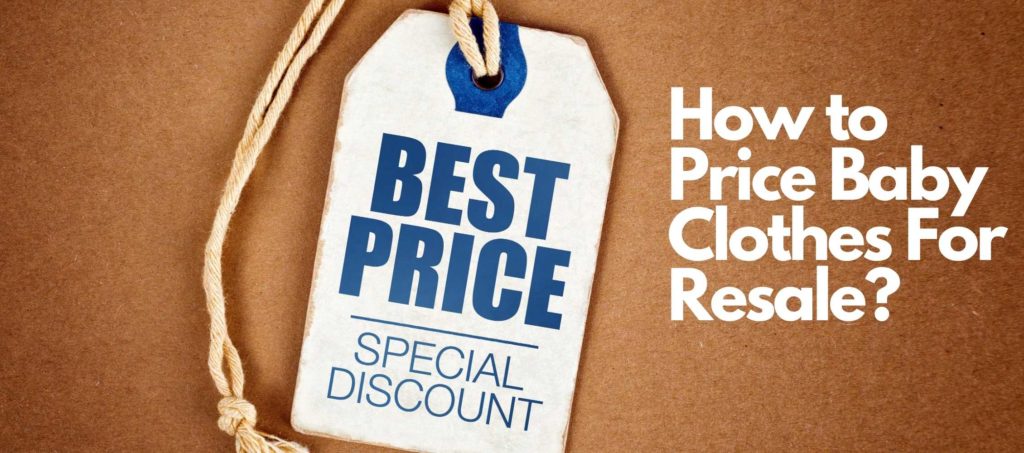
How to price baby clothes for resale
- Before deciding to attach price labels to the clothes, it is paramount to look at their features. What are their brand names? Are they small-sized or normal-sized, pre-owned attires?
- Research prices. Baby clothes cost higher in boutique shops in the mall or independent stores. Search on the internet and work with retail prices, not sale prices.
For example, the reseller in this blog bost researched and listed Gymboree bathing suits and rash guards for sale at $10. She was able to sell them immediately despite them being used. This is because she had researched the ideal price.
According to Investopedia, you should sell used garments at about 70% of the retail value. Sometimes, the cost might be as low as 50% of the value.
- Look out for stains, color fading, shrinkages, damages, or brand names that are missing.
It is important to note these as they determine the selling price. That is why people can sell as low as $0.50 at a throwaway price if the clothes have any of these flaws.
This article Amanda Bell suggests selling baby clothes that are in good condition for $1-$3. Those that are not in perfect shape should sell for 25 – 50 cents. Check out this blog post to learn more about pricing used clothes.
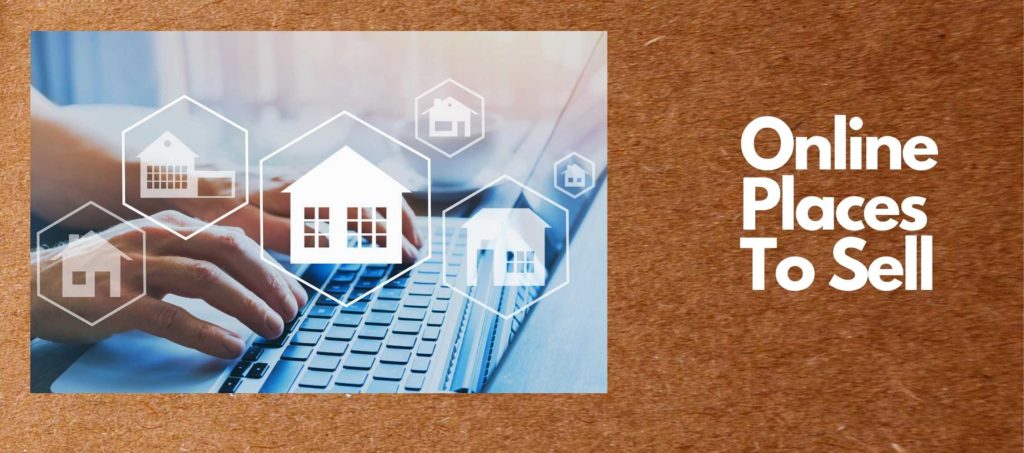
Online places to sell
Before the evolution of the internet, you had to sell clothes at your local yard sales or consignment shops. Today, you easily sell your goods anywhere and at any time. Online sales are around one-quarter of the aggregate in the retail market.
Each online platform has its own terms and conditions. Make sure you understand them before selling.
Examples of places to sell online include
- Amazon: You can choose either the individual vendor plan or the professional one. In the individual one, you can list up to 40 items monthly. Though you do not pay any subscription fees per month, you are charged $0.99 for each item you sell.
There are also referral ($3) and variable closing ($2) fees. The professional plan is for more seasoned sellers who list more than 40 items each month.
You are not charged per item, instead you pay $39.99 as subscription fees. You are also charged referral ($3) and variable ($2) fees. For more on selling on amazon, read here.
- eBay: You can sell through auction or fixed pricing. For auction, buyers bid for your item and the highest bidder purchases it.
Basic listings are charged insertion and final value fees. Insertion fee is 35% for each item. When you list more than 1000 items per month this charge does not apply.
Final value fee is 10% of what you sell regardless of whether you paid for listing or not. More on this here.
- Sheepbuy: This is a safe and secure site that has no hidden fees. Sheepbuy doesn’t charge commission, premium store, or listing fees. There three plans with the basic one being free.
With this plan, you can list up to 3 items free each month. There are also the starter and plus plans starting from $2.99 and up. Find more information on these here.
- Facebook: list your item free on Facebook. Deal with all the marketing, communication, and payment directly with the buyer. This is more of a local classified listing.
- Once Upon a Child: This is a consignment store that has franchises all over the country. You just need to check which one is closest to your location. They pay you immediately for the clothes they pick from you.
Most individuals access these sites several times a day. This means many eyeballs on your baby items. You may sell faster if all other factors like pricing, presentation, descriptions, and condition of outfits, are considered. Here’s a comprehensive list of 10 of the best places to sell used baby clothes.
For a personal online store, use a credible eCommerce platform to set up shop. These platforms include Woocommerce, Shopify, BigCommerce, Magento, Wix, Squarespace, and Ecwid.
Here’s an article we wrote outlining how to develop an online retail strategy.
However, online selling has both merits and demerits.
Merits of selling online
- Online marketing gives everyone a platform to display their different ideas. As a seller, you have the privilege of selling your clothes directly to your target audience. Your creativity in how you display your items may help you sell faster.
- Today, the world has become a global village because of the internet. Someone in Europe can sell the latest baby clothes to customers in the U.S.A. The trick is to demonstrate how your clothes stand out, request your clientele to send reviews, and provide comprehensive content to aid them to make a well-informed choice to buy from you.
- Online stores are widely accessible at the click of a button. Selling online is an efficient way to deliver your clients their choice of clothes without the help of middlemen.
A client in the USA can order a baby coverall from Dubai and easily find it as per his/her requirements.
- It’s quite cheap to get started selling online. There are sites like tinkersale and Sheepbuy that let you display your merchandise at no cost.
- Also, operational costs are quite low. An online shop automatically eliminates the expenses of premises and onboarding staff. So, the focus is on enhancing customer experience and marketing strategies. With the help of website analytics tools, retailers can collect valuable information on their customers’ needs.
Demerits selling online
Some of the disadvantages facing online retailing are:
- Mistrust: It is difficult to earn customers’ confidence. It is an uphill task to set up an online brand without a physical business with a record of accomplishment. Many customers will take time before shopping with you. They do not mind waiting to read reviews of previous clients. Setting up a good customer service system is essential even if it will be at a cost. You will also need to invest in online marketing
- Fraud: With the rapid rise of online businesses, cybercrime has also soared. Working as an online retailer mandates that you manage the security systems and install the latest features. Passwords should be strong to erase any guessing. Otherwise, your transactions may be endangered and your business may be forced to shut down,
- Website costs/auction sites costs: Nothing is free, whether you have your online store or you list on the popular auction sites. If you have an online store, managing it is not cheap.
The costs include looking for a domain name, customizing themes, securing the site, and paying for a web host. Large sales run concurrently with a professional site that is well planned and designed. For auction sites, you pay subscription costs, the fees per item listed, and a cut of your sales.
- Advertising charges: Before your retail brand becomes popular, you may need to set aside a substantive budget for advertising. You’ll need to spend some money to let people know that you exist in a saturated online space.
Here’s an in depth article on the advantages of an online marketplace over a traditional business.
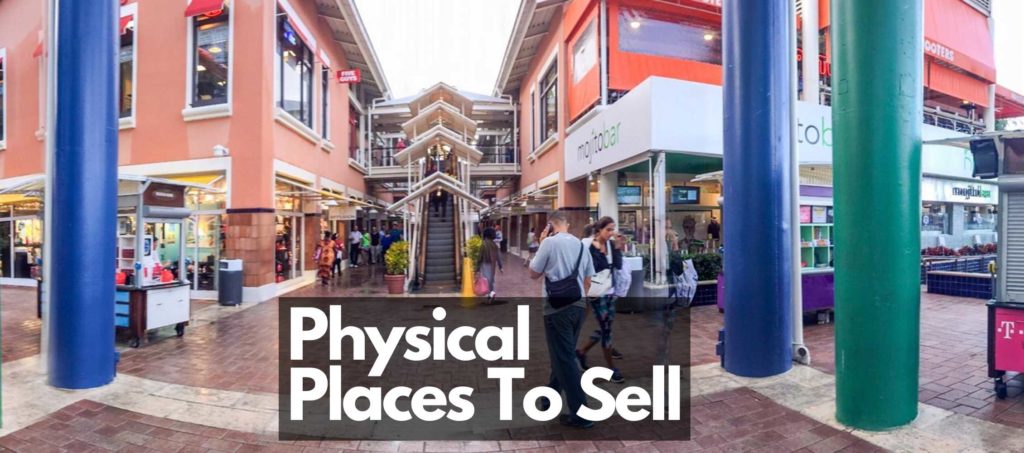
Physical places to sell
You can sell your baby clothes physically in various places including yard sales, estate sales, thrift stores, or flea markets, booths, or your own physical store.
For a physical store, ensure you meet all the requirements including licensing and company tax compliance.
Dos
- Endeavor to offer ideal customer support. If there is a complaint concerning something you sold, address the issue head-on. Customers need to have an assurance that there is an ever-ready person to hear and solve the problems they face with the products they buy.
- Sell trendy baby wear if you want to stay ahead of the game. You will attract more buyers because trendy wear is popular. You will not go wrong by selling the latest baby garments.
- Customers expect value for their money. Ensure you stock quality baby clothing if you want to uphold your brand. A buyer has expectations of finding durable outfits that are of a high standard.
- To win over customers, have special offers. These incentives attract them to seek you out frequently. When you reduce your prices, shoppers will not think twice about buying from you. However, do not compromise the quality of the products by lowering their prices too much.
Don’ts
- Do not make reactive decisions that may affect your long-term strategy. Set strategic plans that will run your venture for a while. Give calculated discounts rather than doing it because everyone else is.
- Do not lack a good returns policy. Customers are justified to dislike what they initially thought was good for them. A good return policy will give you an upper hand in winning customers’ confidence in your clothes. You will also get referrals from such customers.
- Do not relax your marketing strategies, as there is always stiff competition. You have to position yourself as a preferred seller and be determined to sustain your venture.
Safety measures when selling online
- Do not reveal too much of your personal information. You never know how someone may use it.
Use the email services provided by the site you are using. If not, create a new email address for the sole purposes of selling. If you must communicate by phone, mask your phone number or, acquire a disposable phone number.
- Check the online site you are selling in to ascertain that it is secure. If it has no padlock sign, avoid it. If the address does not start with ’https’ but instead is ‘http’, avoid it also. Insecure sites make your information easy to steal by fraudsters. Buyers will also avoid buying from such sites.
- Use an online site that has favorable policies for sellers. Be very keen on the returns policies so that you know what happens when buyers return items.
- Avoid using a site that has poor sentence structures and grammar. This could mean that it was hurriedly put together and is most likely one run by scammers.
- Be careful with payment. Ask potential buyers to pay you through Paypal. Follow up by checking whether the address for delivery is the same as the one on Paypal. Also, ascertain that the buyer has deposited the cash into your account before shipping the items.
- Be wary of buyers who are ready to pay more than what the baby clothes cost. Be even more worried if they want you to ship them in a hurry. Those are red flags. Cut all communication with such people.
If a buyer suggests sending you excess money so that you refund through another channel, do not accept. That points to a scammer who may land you in trouble.
- Never let your guard down when communicating with potential buyers. Avoid long-winded conversations unrelated to what you are selling.
- If you must meet to deliver the clothes, be extra cautious. Go with an acquaintance and meet in a secure public place. If you are receiving a lot of money, do so inside a bank. This will prevent the buyer from stealing the same cash from you.
- Do not accept personal checks or cashier’s checks. You may not have enough time to verify if they are genuine or not. Accept only cash payments when meeting in person. Let the buyer verify that the clothes are in order before you part ways. This is to prevent issues cropping up later.
- Consider paying shipping insurance to avoid engaging with buyers if any problem occurs. The insurance company will handle any issues related to the delivery of goods.
- Use a secure delivery company that will track the items to the end. Scammers usually deny receiving goods especially if they are left outside their door or if they do not sign for them.
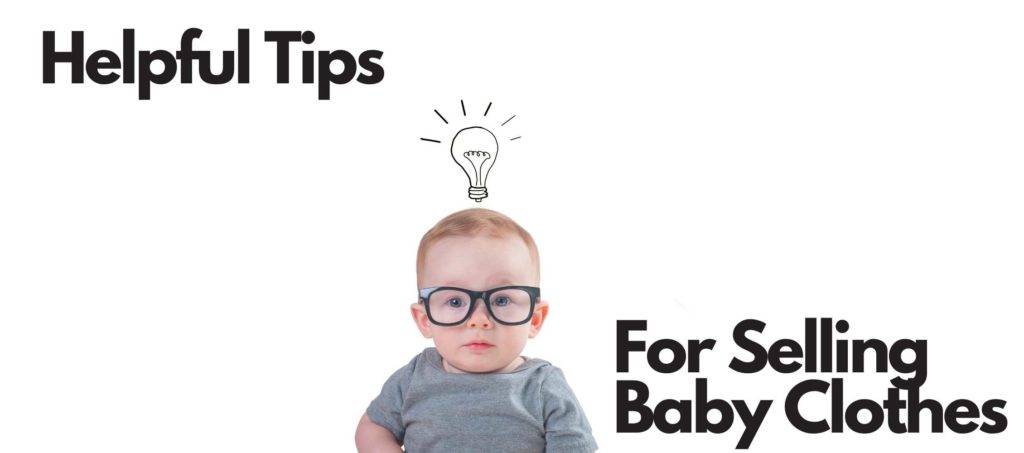
Helpful tips for selling baby clothes
- Describe comprehensively. State the size, label, condition, and cost of the clothes. If they are in bundles say what type of clothes and for what age range.
- Decide whether to sell in lots or individually. Sort your clothes and see which ones to sell as bundles. For the bundles, make sure they are the same size and type.
- Be season-sensitive. Sell your clothes ahead of the next season. This is to say, if summer is in a few months’/weeks’ time, sell sundresses or shorts.
- Take clear photographs. Whether you are using your phone or camera, strive to take good photos using natural lighting. Ensure there is nothing in the background to distract buyers. You can tweak these pictures by contrasting the colors so the item stands out.
- Understand the terms of the platform. Before using any selling site, make sure their terms, conditions, and policies are clear to you. Be sure that their costs are fair and they won’t eat into your profits.
- Once you sell, delete the item. You do not want to keep telling people that the item has sold. It is annoying and a waste of time.
- Take your time. Do not be in a hurry to post all your items at once. Do it in bits. You can take photos first and when you have more time, post them. Wait to see if they sell. Repeat the process later when you have time.
- Keep trying even when you do not sell. Do not get discouraged if you do not sell immediately. If time goes by and you do not sell, consider giving them out to charity.
Related Questions
What baby products sell the most?
Parents are always in need of items for their babies. However, you cannot go wrong selling items that are more popular.
- Strollers
Parents do not mind spending money on strollers. They are convenient for parents who also prefer brand names such as Britax and Bugaboo. If the strollers have accessories like trays and attachments, they will sell well.
- Diapers
This is a must-have for any parent with a baby. Babies use diapers all the time. Since they cannot stock just one size because babies grow fast, they have to keep buying as is needed.
- Baby wipes
These go hand in hand with diapers. Whenever you change a baby diaper, you have to wipe the bottom. If they drool, they also need cleaning. Hence, parents require a constant supply of wipes.
Check out this blog post for an in-depth look at the best baby products to sell online.
How do I set up a baby online boutique?
- Have a business plan. It details all the strategies to ensure success. These include the financial costs, and what profitability to expect.
- Choose your clothes niche carefully. Concentrate on one type of clothing until you understand the online business.
- Register your business. It involves stating whether you will be a sole proprietor or otherwise, and file the necessary paperwork.
- Determine where to source your inventory.
- Single out the eCommerce platform to use for selling. Examples are Shopify and Woocommerce.
- Set up your store online. This will reflect what you are selling. You will pick the domain, theme, logo, and colors. Choose the mode of payment and install shopping carts.
- Start marketing aggressively. Use social media, emails, influencers, and trade fairs.
How do I sell baby handmade clothes?
Here are some tips to help you when selling handmade clothes.
- Attach labels that have all the information about the type of material used. The clothing should also have labels showing how to care for the clothes.
- Sell them in wholesale lots to baby boutiques. You receive payment immediately, which is about 50% of the retail price.
- Sell them in consignments; you receive payment after the store sells your products. They take a certain percentage, usually 40%, and give you the rest. You also get to agree for how long they display your clothes, say a month.
After a month, you get back your items if they do not sell.
- You can also sell online in an auction site or an online marketplace. Here, you pay a monthly fee to sell on your chosen platform. Any time you sell, a certain percentage goes to the site. Our very own Sheepbuy is a marketplace that allows you to list three items free per month with no selling fees ever. However, if you have more items, you can choose from one of our low monthly plans with no selling or hidden fees. Learn more here.
Learn more about selling handmade clothes here.
Conclusion
Selling baby clothes is an exciting venture but, just like any other business, it requires plenty of research to increase your chances of success.
A lot of your preparation will involve figuring out where you can buy good quality baby clothes at a low cost and how much to sell to make a profit.
You also need to identify the ideal place to sell – whether online or physically – to find your target market.
This article, hopefully, helps you answer these questions as you plan your baby clothes business. And when you’re ready to start selling, consider listing on Sheepbuy. Our platform is great for startup sellers as we don’t charge a commission on sales on any of our plans. If you intend to sell a low volume per month, consider our free basic tier in which you can have up to three active listings at a time, at no cost whatsoever. Find out more about our plans here.
TRENDING


Online Arbitrage for Beginners (Step-by-Step Guide)
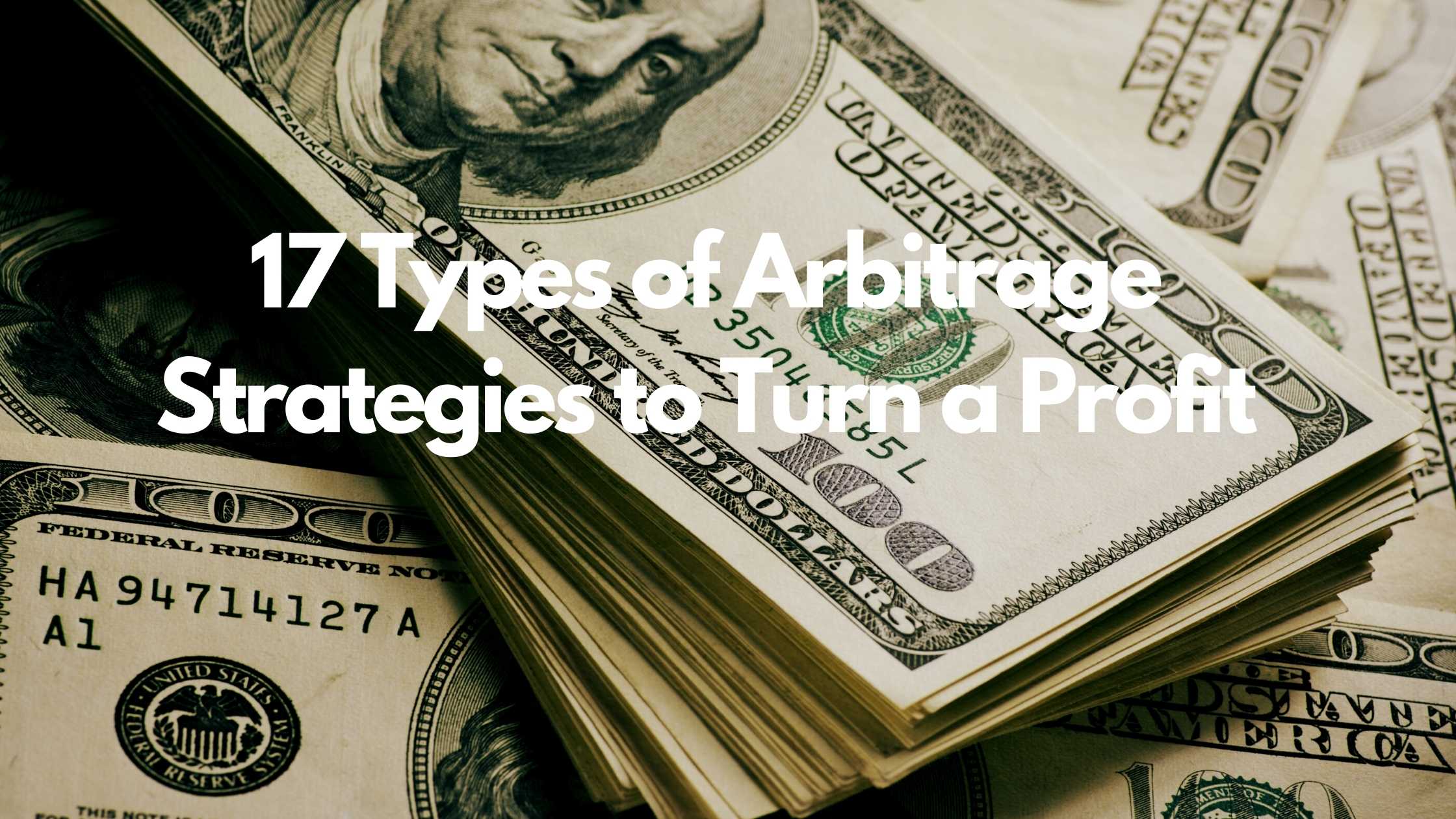
17 Types of Arbitrage Strategies to Turn a Profit
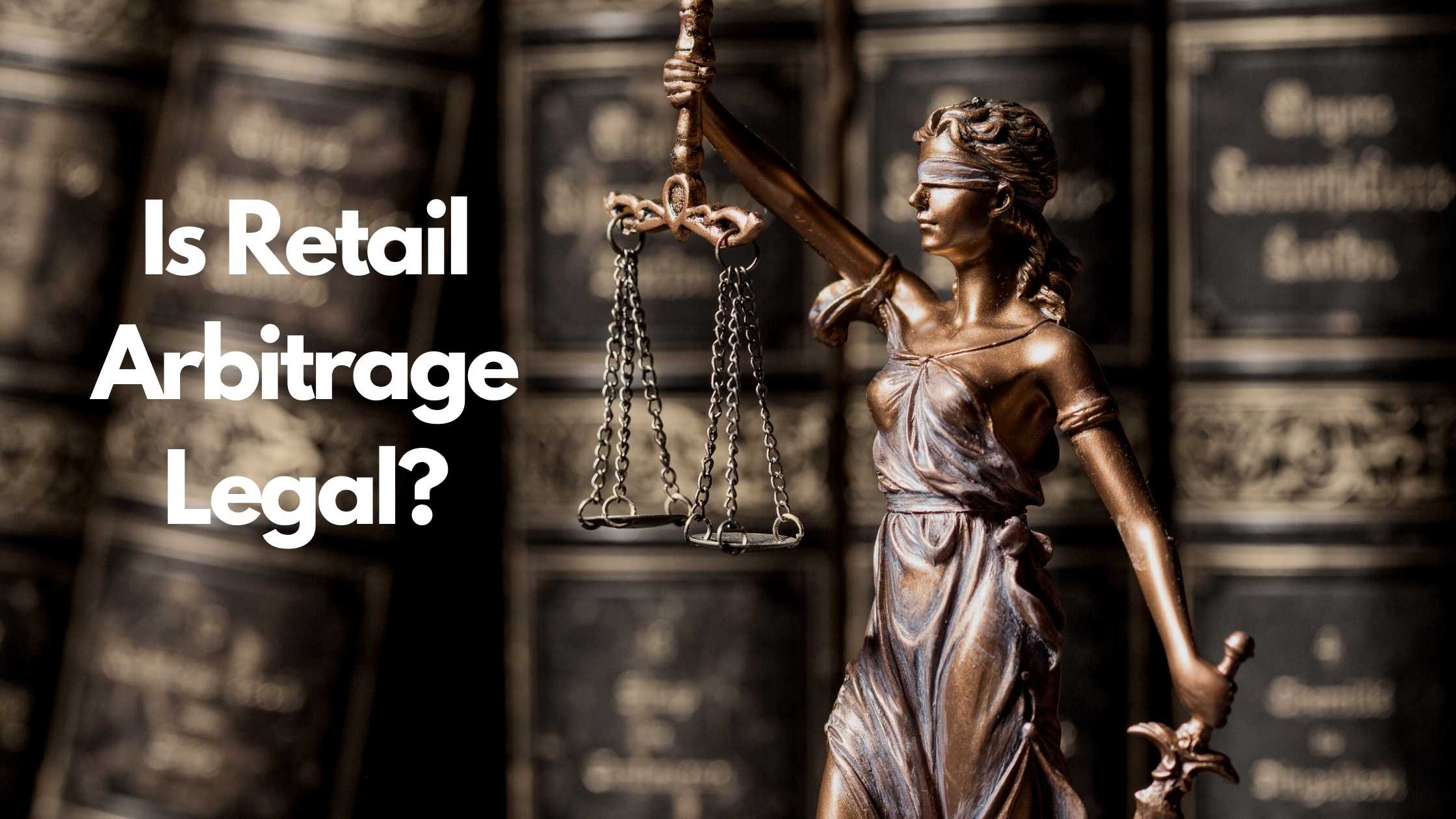
Is Retail Arbitrage Legal?
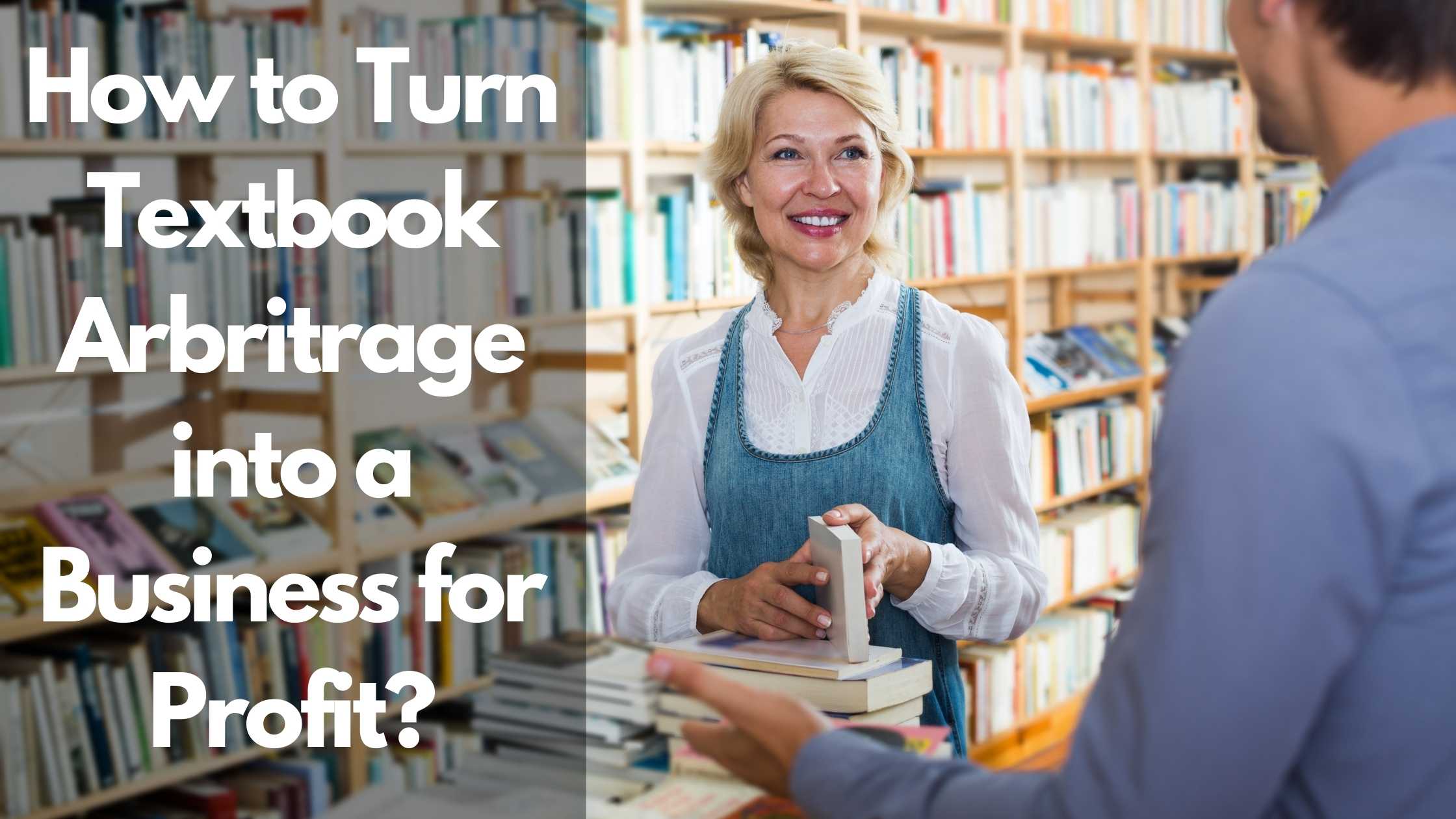
How to Turn Textbook Arbitrage into a Business for Profit

How Can You Tell if a Book is a First Edition?

What to Do With Your Jigsaw Puzzle When Finished?
